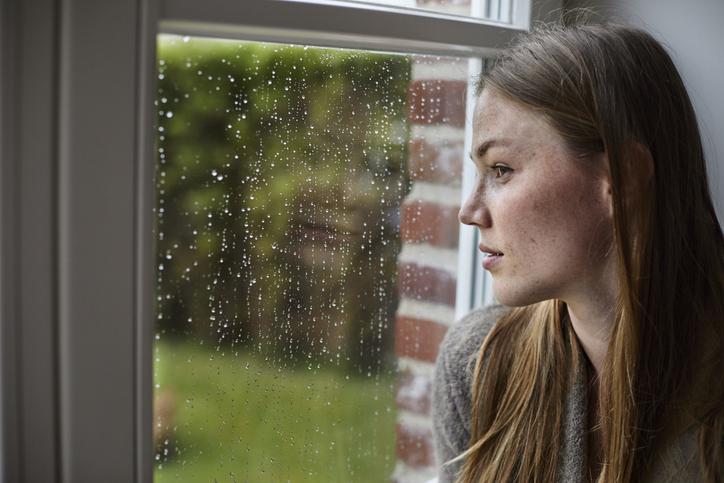
If 2020 thus far could be stated in three words, I think we’d all agree, “Stay At Home” pretty much covers it. Don’t leave unless it’s essential. Don’t go to work unless your job is essential. While staying at home is the safest way to prevent spread of disease, this rhetoric hides an important and essential caveat. We are making the assumption that home is a safe haven for everyone, a sanctuary from the pandemic we are living in. But what if your home isn’t physically, mentally, and/or emotionally safe? What if you had to choose between two evils: infection or abuse?
While staying at home is the safest way to prevent spread of disease, this rhetoric hides an important and essential caveat. We are making the assumption that home is a safe haven for everyone. Click To TweetFor thousands of people in homes and environments with domestic violence and abuse (1 in 7 children and 10 million men and women, just in the US), getting infected with COVID-19 is only one of the many risks they currently grapple with daily. With places like jobs, schools, social services, and support groups being shut down or reduced due to COVID-19 safety measures and financial strains, the thing that is saving us from infection is ultimately putting millions of children and adults in their nightmare situation.
COVID-19 has only exacerbated and amplified cases of domestic violence globally, and for reasons beyond lockdowns and Stay-At-Home orders. It’s not a new problem; many studies show that violence and reports of violence increase during times of natural disasters or crises, due to increased stress, insecurity, and ways that the climate affects the dynamics of power and control that many perpetrators want to have over their victims. Though COVID-19 is an unprecedented challenge, we can expect similar patterns as it relates to domestic violence.
Many analyses from the past few months suggest fewer calls than are usual for reported abuse. In theory this sounds great, but the reality is grim: this just means that the abuse is rampant, invisible, and going unnoticed. This is partially because more than 20% of referrals for child violence are made by educators. Additionally, the heightened financial insecurity and isolation has led to behaviors that are especially dangerous for domestic violence victims: gun and ammunition sales in the US have skyrocketed at unprecedented rates since COVID-19 reports in March and continue to do so due to the stressors and fears of civil unrest. Too little is being done too late: many emergency physicians are seeing a spike in child abuse and domestic violence hospitalizations.
The combination of a pandemic and domestic violence is a deadly double-edged sword, magnifying the intensity of suffering for the children and adults experiencing domestic violence. The heartbreaking news lines are rampant: a quick google search gives me a plethora of tragic stories of children reported as missing for weeks, intimate partner violence taking deadly turns, and the fear of what is happening behind closed doors. Yet, rarely is domestic violence visibly covered in public media under normal conditions, let alone during a pandemic.
The combination of a pandemic and domestic violence is a deadly double-edged sword, magnifying the intensity of suffering for the children and adults experiencing domestic violence. Click To TweetAs Mareisha Reese highlighted in a recent post, it is no secret that COVID-19 has disproportionately impacted historically marginalized, Black, Brown, and low-income communities, through a plethora of systemic injustices. Similarly, we need to recognize how domestic violence disproportionately affects communities of color and low-income families- the same communities most affected by COVID-19. Domestic violence has unfortunately been overshadowed by this disease that perpetuates its rise and severity.
I can’t say it enough: crises such as COVID-19 create exponential and disproportionate suffering for communities already marginalized. I, and many people I know, feel helpless about what we can do given the current restrictions. But it is important to acknowledge that, as a person who has the privilege of not having to worry about my physical and emotional safety in my living situation, my “stay-at home” situation still gives me power to make a difference. Whether you are a friend, a parent, an educator, a social worker, or an executive leader, all of us have the power and creativity to find novel responses to make sure lives aren’t lost due to violence during these turbulent times. One easy action is sharing information about the 24/7 National Domestic Violence Hotline widely. Here are some other ideas to make sure our loved ones don’t have to choose between two evils:
- If you are looking to bring awareness to the issue, but don’t know how to be most effective: share culturally-specific resources and contribute to safe housing for caregivers and survivors of domestic violence. Many call centers and social service providers are offering virtual groups and sessions and are ramping up their capacity to serve the specific challenges of those fleeing from danger during COVID-19. Here is a list of culturally–specific national resources for domestic violence. If you have the financial capability to create systemic change through safe housing, donate to the YWCA COVID-19 Emergency Relief and Community Resilience fund to help keep these essential resources such as women’s shelters and domestic violence safe havens open across the country. If you are able, offering your guest bedroom or additional property could make a huge difference in someone’s life.
- If you are a concerned caregiver or educator: Going the extra mile in what is already a challenging learning and teaching environment is crucial to students’ physical and mental well-being, and ultimately, disrupting the domestic violence crisis. Continue to be intentional about looking for and reporting signs of abuse, even through virtual communication platforms. Often, those suffering from violence are silenced in their homes, and don’t feel safe communicating through technology. If this is the case, create code words with your students, friends, and family to alert of danger or need for assistance. Additionally, the National Domestic Violence hotline has a chat line that deletes conversations , and apps like Circle of Six make seeking help untraceable for added safety at home. Whether it is through physical appearance or what you may hear in the background, take the extra step to check in with students, family, and friends on a 1:1 basis.
- If you are an organizational and/or community leader: Show your employees that domestic violence is a health concern and a priority. Many people might not know that more than 20 states, cities, and other municipalities have adopted paid leave and other protections for cases of domestic violence. Forty-five million dollars have been allocated specifically for domestic violence services in the COVID-19 CARES Act. Check in on colleagues and share resources such as call lines and state-specific protections to make sure your community and employees know that their safety is your priority. If you want to be a trailblazer- providing extra financial assistance to domestic violence victims could be the difference between someone staying in a dangerous situation or not; financial dependence is often a barrier to escaping a dangerous living situation.
Lastly, remember that the descriptor “essential” goes beyond food and medicine: Experiencing abuse of any kind is an essential reason to leave your house and find safety. With our awareness and vigilance, we can disrupt this crisis within a crisis, and hopefully continue to bolster our efforts towards disrupting domestic violence for years to come.
Remember that the descriptor “essential” goes beyond food and medicine: Experiencing abuse of any kind is an essential reason to leave your house and find safety. Click To Tweet

















